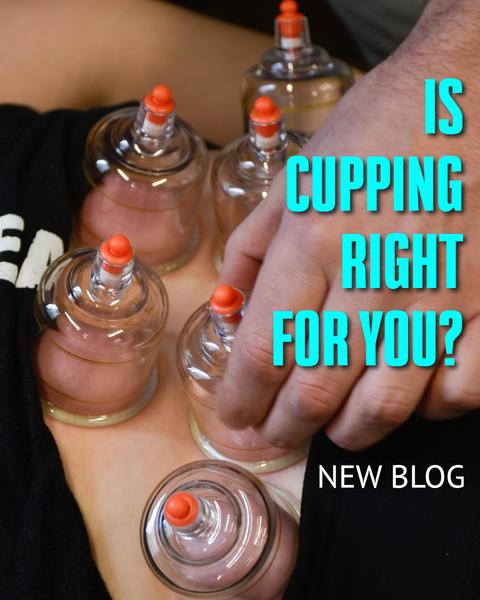What is Cupping - aka... What Are Those Big Circular Bruises Seen on Peoples Back?
By Haley Leo - November 19, 2020
What is Cupping (aka those big circular bruises seen on peoples back)?
Have you ever seen those big bruised circles on your favorite athlete and wondered “what happened??” For many, the first experience with cupping was seeing Michael Phelps during the 2016 Olympics, covered in dark circular bruises. Since then, the sports world has been taken with cupping.
Historically, cupping has been utilized since ancient China. Originally it was used to help cleanse impurities and balance chi however since 2016, cupping has been used to help address imbalances in the body that are more physical in nature. In physical therapy, cupping is used to address muscle tightness, tissue adhesion and trigger points. In the body, the different muscles and tissues are layered on top of each other and, when there is an injury in the body, these layers can stick to each other. This sticking, or tissue adhesions, can cause muscles to become tight, uncomfortable, and sometimes to even cause trigger points. Trigger points are irritable nodules that develop in the tissue, more often known as muscle knots.
Cupping is the use of plastic or glass cups and a pump to create a vacuum over the area of issue in the body. The cup is placed on the area that is either tight, painful or restricted in motion and the pump is used to remove air from inside the cup. When the air is removed using the pump, the superficial skin and tissue is pulled into the cup. The act of pulling these tissues into the cup, this distraction of tissues, can cause a few different effects that can benefit the different muscles. Cupping can increase fluid between the layers and “break up” tissue adhesions. First, increased blood is pulled to the area of the cup and, therefore, increased fluid is able to flood these tissues. This fluid can help to “hydrate” the tissue and to allow for better gliding between tissues. Second, this increase in pressure can cause tissue adhesions to break apart and improve the ability of the tissues to move and glide over one another.
In the Physical Therapy field, the color of your marks do not correlate to greater issues in the tissue but most people will experience dark bruising from the cups. These bruises generally take 7-10 days to fade and often are tender, as bruises can be, for up to 0 days as well. Overall, your therapist can use cupping to help get rid of those nagging muscle knots and often, address the tightness and pain you may feel after an injury.
Come see your therapist today to see if cupping therapy is the right thing for you!
